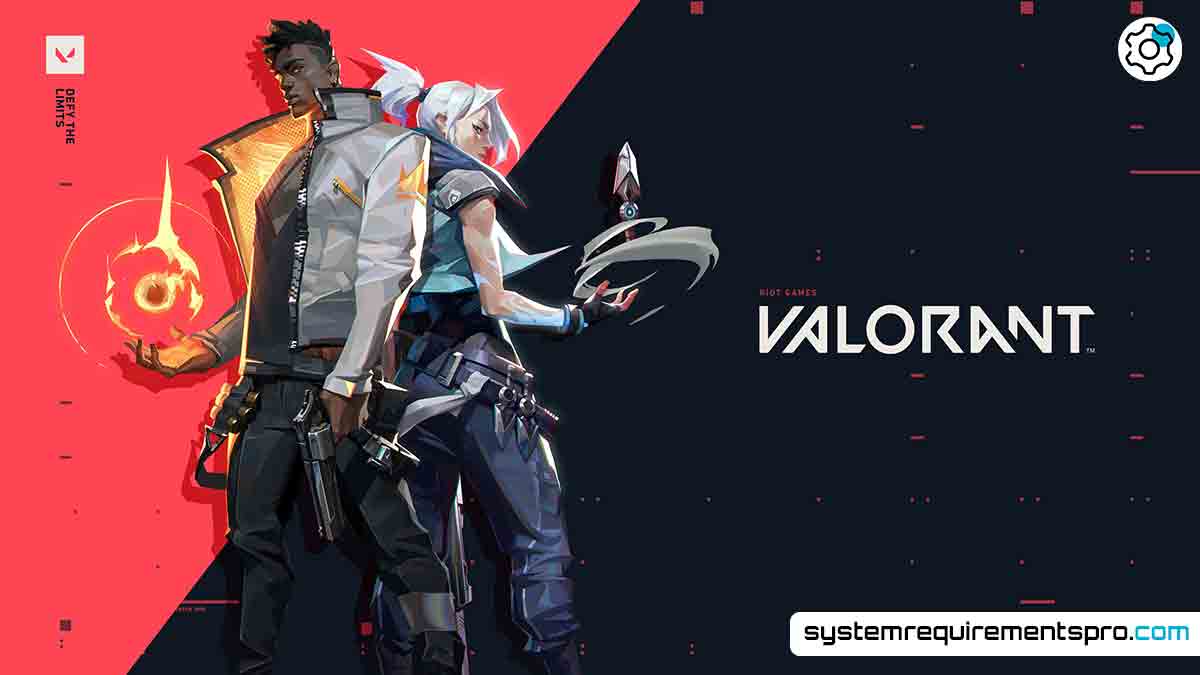With its combination of exact gunplay and strategic abilities, Valorant, Riot Games’ first-person shooter, has rocked the gaming scene. Whether your level of play is casual or aspirational professional, knowing the Valorant system requirements is essential for seamless gameplay. In order to help you get the most out of your gaming experience, this guide dissects the minimum and recommended specs, compares how they perform, and provides optimization advice.
Valorant Minimum System Requirements
To run Valorant on your PC, your system must meet the following baseline specifications:
Minimum Requirements
- Operating System: Windows 7/8/10 (64-bit)
- Processor: Intel Core 2 Duo E8400 / AMD Athlon 200GE
- RAM: 4GB
- Graphics Card: Intel HD 4000 / AMD Radeon R5 200
- VRAM: 1GB
- Storage: 30GB available space (HDD)
For basic playability at 720p resolution and 30 FPS, these requirements were created. Although Valorant runs best on older hardware, players using minimum specs could find frame rate declines on detailed maps or during intense combat. Although integrated graphics cards like the Intel HD 4000 will work, visual quality will suffer.
Valorant Recommended System Requirements
For a consistently smooth experience at 1080p resolution and 60+ FPS, aim for these specifications:
Recommended Requirements
- Operating System: Windows 10 (64-bit)
- Processor: Intel i3-4150 / AMD Ryzen 3 1200
- RAM: 4GB (8GB recommended for multitasking)
- Graphics Card: NVIDIA GeForce GT 730 / AMD Radeon R7 240
- VRAM: 1GB
- Storage: 30GB available space (SSD preferred)
In competitive environments, the recommended specs place a premium on stability. An SSD lowers load times; a dedicated GPU like the GT 730 guarantees improved texture quality and anti-aliasing. These specs let gamers comfortably use medium-to-high settings without compromising FPS.

Valorant System Requirements PC: Minimum Requirements vs Recommended Requirements
You can balance performance and visual quality by understanding the differences between minimum and recommended specs. Here is a straightforward analogy:
| Category | Minimum Requirements | Recommended Requirements |
|---|---|---|
| OS Requirements | Windows 7/8/10 (64-bit) | Windows 10 (64-bit) |
| CPU Requirements | Intel Core 2 Duo E8400 | Intel i3-4150 / AMD Ryzen 3 1200 |
| RAM Requirements | 4GB | 4GB (8GB ideal) |
| GPU Requirements | Intel HD 4000 | NVIDIA GT 730 / AMD R7 240 |
| Storage Requirements | 30GB HDD | 30GB SSD |
Key Takeaways:
- OS: Windows 10 is better.
- CPU: Newer processors are better at handling heavy loads.
- RAM: 8GB prevents stuttering when apps run in the background.
- GPU: Dedicated cards look sharper.
- Storage: SSDs cut load times by 50%.
Minimum specs let you play Valorant, but recommended specs let you play it to the fullest, especially in ranked, where every frame counts.
Optimization Tips for the Valorant Game
Even if your PC meets the recommended specs, these will help further:
- Update Drivers: Make sure your GPU drivers are up to date for optimal compatibility.
- Lower In-Game Settings: Prioritize FPS by turning off shadows, reducing resolution, or turning off anti-aliasing.
- Close Background Apps: Apps like browsers or streaming software consume RAM and CPU.
- Full-Screen Mode: This minimizes input lag and gives more resources to Valorant.
- Monitor Temperatures: Overheating can throttle performance; use software like MSI Afterburner to monitor GPU/CPU temps.
- Wired Internet Connection: Reduce latency by not using Wi-Fi in competitive play.
Conclusion
One of Valorant’s best features is how easily players with older hardware may join the action. A seamless, competitive experience is guaranteed if the Valorant system requirements are met at the recommended level. Whether you’re holding a 1v5 or practicing lineups, by optimizing your settings and hardware, you can enjoy clear visuals and buttery-smooth gameplay.
Frequently Asked Questions
Can I run Valorant on a laptop?
Yes! Most modern laptops with integrated GPUs (e.g., Intel Iris Xe) meet the minimum requirements.
What’s the difference between minimum and recommended specs?
Minimum specs get you by, recommended specs get you higher FPS and better visuals.
Does Valorant work on Mac?
No, but you can use Boot Camp or cloud gaming services to play on Mac.
How do I improve FPS on a low-end PC?
Lower resolution, turn off shadows, close background apps.
Do I need an SSD for Valorant?
Not necessary, but map load times will be way faster.
Can Valorant run on a GTX 1050 or similar mid-range GPU?
Yes. A GTX 1050 meets the recommended GPU requirements, so you can play Valorant at 1080p with high settings and 100+ FPS.
Will Valorant run on 2GB of RAM?
While the minimum is 4GB, players have reported running Valorant on 2GB RAM with heavy stuttering and long load times. Upgrade to 4GB or 8GB is highly recommended.
Does Valorant require high-speed internet?
Valorant recommends a broadband connection with at least 10 Mbps download/upload. For competitive play, aim for a ping below 50ms.
Can I play Valorant on Linux?
Valorant isn’t supported on Linux natively. Some players use Wine or dual-boot setups, but anti-cheat (Vanguard) might cause issues.
Does overclocking help Valorant?
Overclocking your CPU or GPU will give you more FPS, but make sure to test for cooling and stability to avoid hardware damage or game crashes.
Is 144Hz monitor good for Valorant?
Yes! 144Hz monitor with 144+ FPS is smoother and better for tracking fast-moving targets and reaction times.
We hope that you have found the answer to the system requirements for Valorant. Follow System Requirements Pro for more such updates, and bookmark this page to get the latest updates on the system requirements for Valorant.

